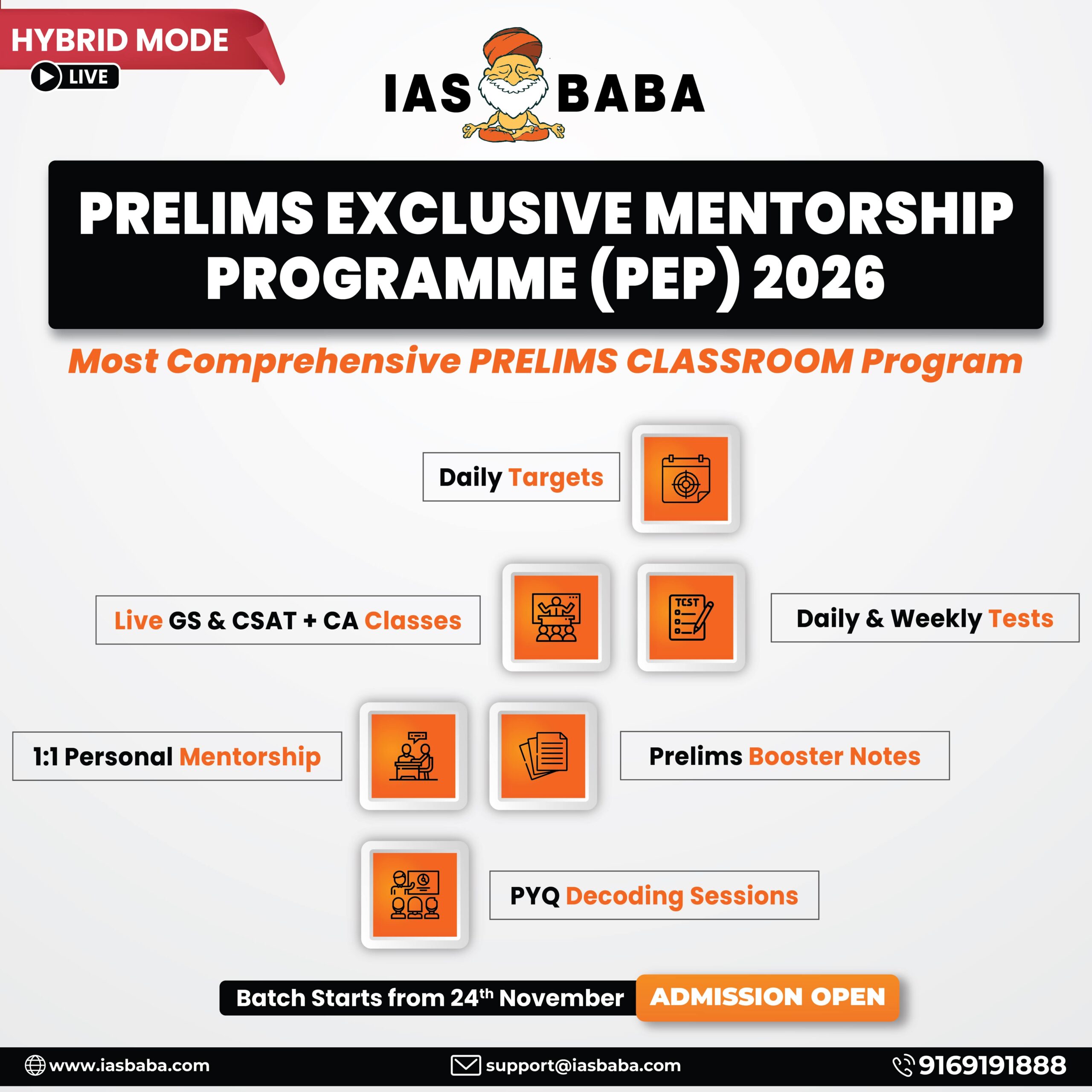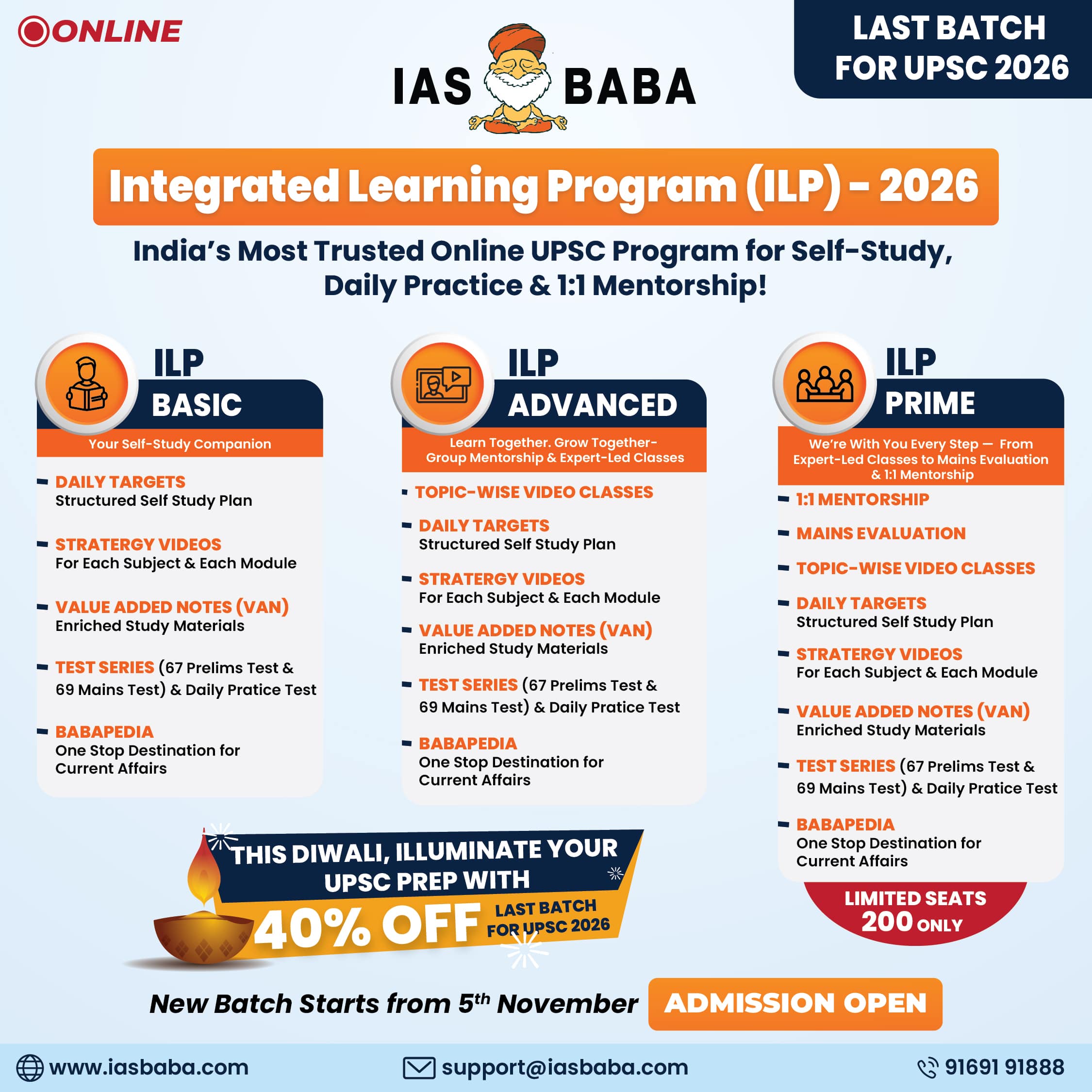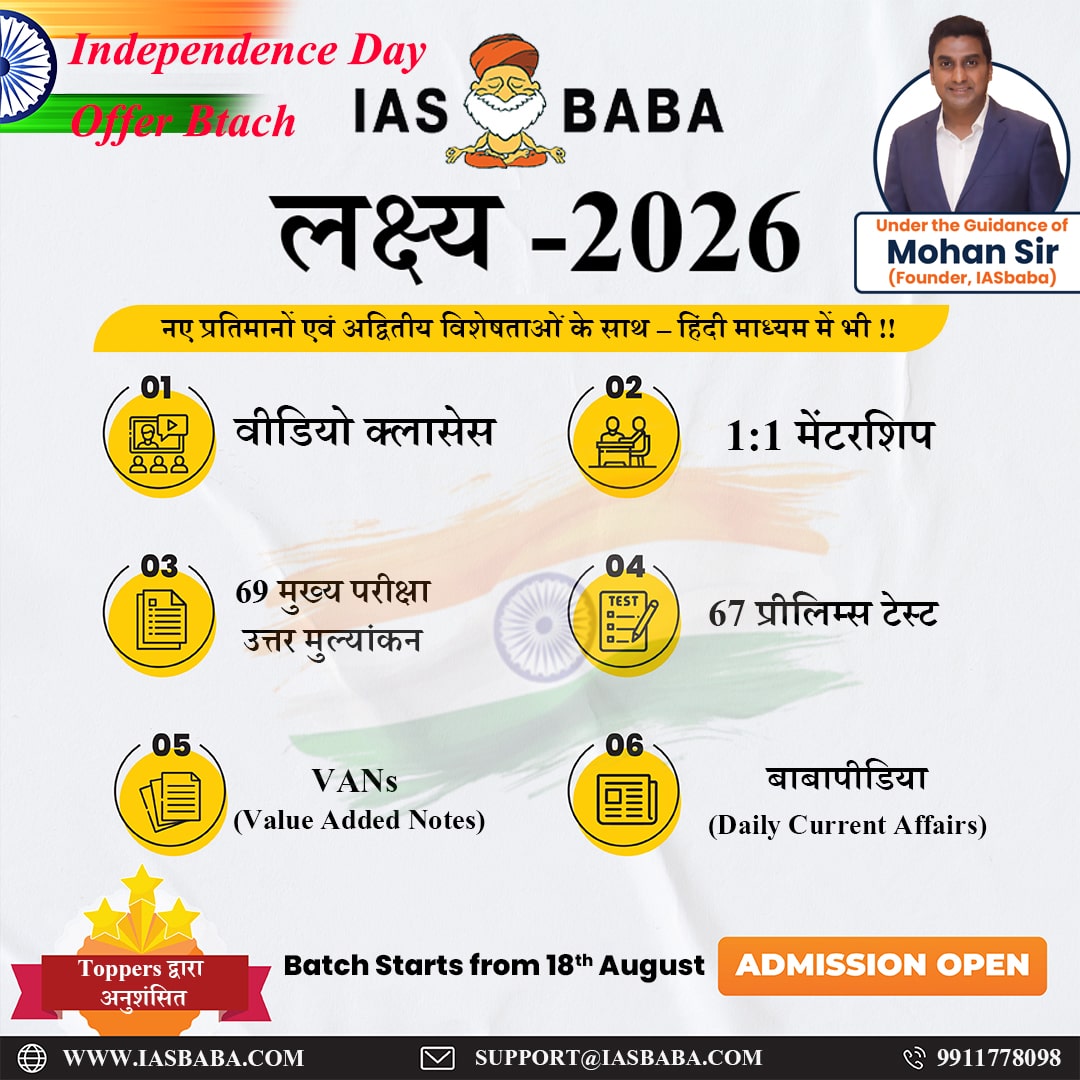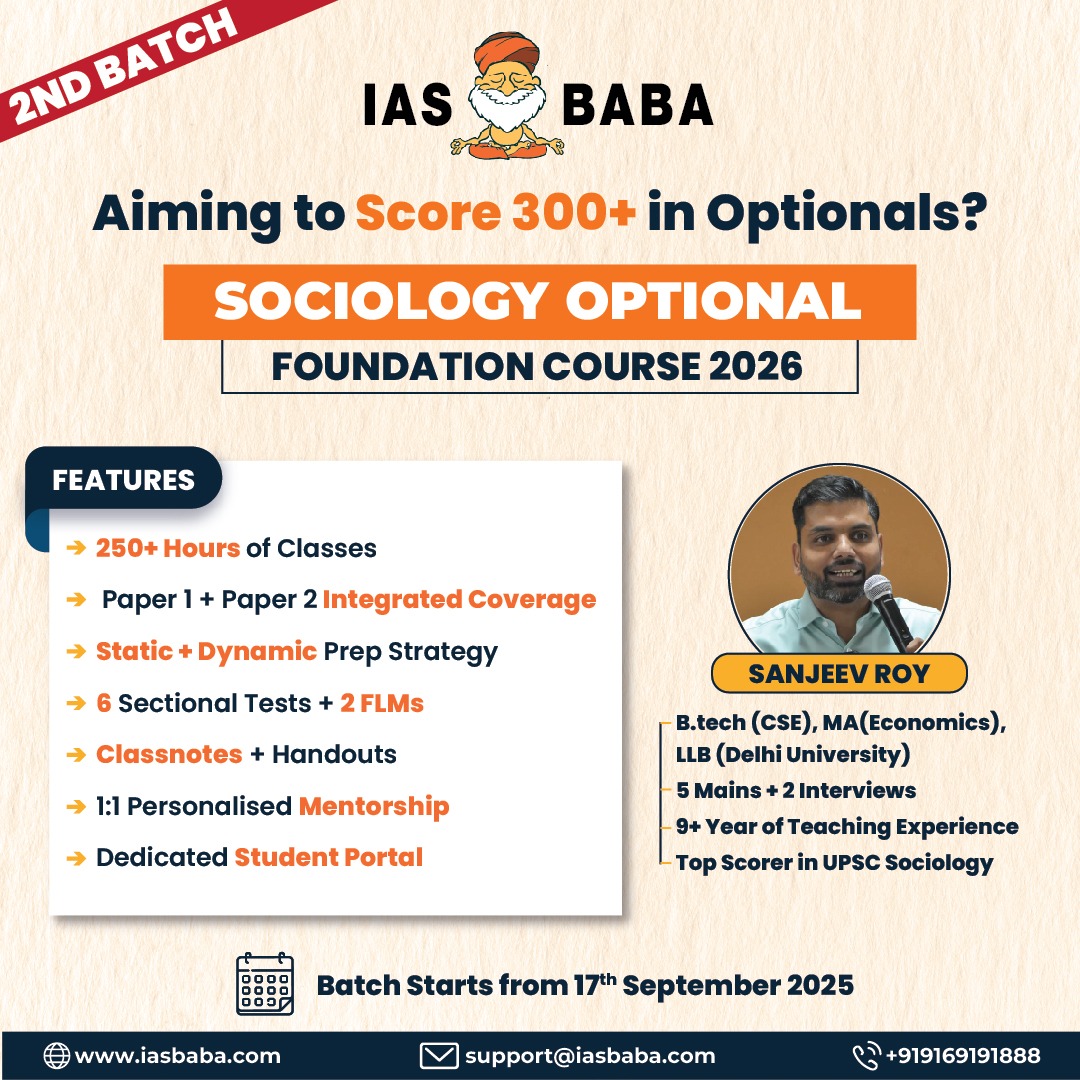IASbaba's Daily Current Affairs Analysis
Archives
(PRELIMS Focus)
Category: Polity and Governance
Context:
- Bodoland People’s Front (BPF) president Hagrama Mohilary was sworn in as the Chief Executive Member of the Bodoland Territorial Council (BTC).
About Bodoland Territorial Council (BTC):
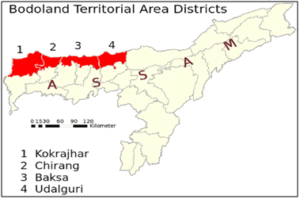
- Location: It is an autonomous region in the state of Assam in India.
- Composition: It is made up of four districts (Kokrajhar, Chirang, Baksa and Udalguri) on the north bank of the Brahmaputra river, surrounded by the foothills of Bhutan and Arunachal Pradesh.
- Jurisdiction: The area under the jurisdiction of BTC, formed under the 2003 Accord, was called the Bodo Territorial Autonomous District (BTAD).
- Sixth Schedule: BTC is an area governed under the 6th schedule. However, BTC is an exception to the constitutional provision under the 6th schedule.
- Members: It can constitute up to 46 members out of which 40 are elected. Of these 40 seats, 35 are reserved for the Scheduled Tribes and non-tribal communities, five are unreserved and the rest six are nominated by the governor from underrepresented communities of the BTAD.
- Separate State: The first organised demand for a Bodo state came in 1967-68 under the banner of the political party called Plains Tribals Council of Assam.
- Assam Accord: In 1985, when the Assam Movement culminated in the Assam Accord, many Bodos saw it as essentially focusing on the interests of the Assamese-speaking community.
- Evolution of Bodoland Territorial Council (BTC):
- The first Bodo Accord was signed with the ABSU in 1993, leading to the creation of a Bodoland Autonomous Council with limited political powers.
- The second Bodo Accord was agreed to create a self-governing body for the Bodo Areas in the State of Assam. In pursuance of this, the Bodoland Territorial Council (BTC) was created in 2003 with some more financial and other powers.
- The third Bodo Accord was signed in 2020. It promised more legislative, executive and administrative autonomy under the Sixth Schedule to Bodoland Territorial Council (BTC) and expansion of the BTC territory in lieu of statehood.
Source:
Category: Environment and Ecology
Context:
- Bangladesh’s defence force said it has deployed warships and patrol aircraft to protect Hilsa fish from illegal fishing during its spawning season.
About Hilsa Fish:
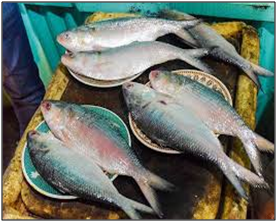
- State fish: It is the state fish of West Bengal and the national fish of Bangladesh.
- Clupeidae family: It is a species of fish belonging to the Clupeidae family, which includes herring fish.
- Uniqueness: It is also called Ilish and holds an exceptional position in the culinary customs and social practices of Bengal. It is a fish that is highly prized because of its delicate flavour, distinct taste, and silky texture.
- Location: It is found in rivers and estuaries in Bangladesh, India, Pakistan, Myanmar, and the Persian Gulf area. They travel to rivers like the Ganges River and Godavari River in India.
- Lifespan: Hilsa fish live in both saltwater and freshwater. They spend most of their lives in the ocean. However, when it’s time to lay their eggs, they swim up into rivers. This journey is called a migration.
- Appearance: Hilsa fish have a silvery body. They are quite flat and have a pointed head.
- Weight: Hilsa can grow up to about 50 cm, weighing more than 3 kg. They are known for their many small bones.
- Conservation Status: It is classified as ‘Least Concern’ under the IUCN Red List.
Source:
Category: Environment and Ecology
Context:
- A female calf born to one of the oldest elephants in the Kaziranga National Park and Tiger Reserve has been named Mayabini to honour Zubeen Garg.
About Kaziranga National Park:
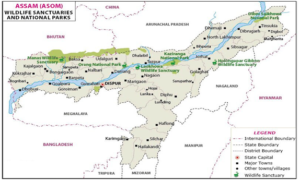
- Nature: It is the single largest undisturbed and representative area in the Brahmaputra Valley floodplain.
- Location: It is situated in the north-eastern part of India in the state of Assam.
- Terrain: It is of sheer forest, tall elephant grass, rugged reeds, marshes, and shallow pools.
- Rivers: The River Diffalu, a tributary of the Brahmaputra, flows through the National Park while another tributary, Moradifalu, flows along its southern boundary.
- Flora: It is primarily famous for its dense and tall elephant grasses intermixed with small swamplands. It also includes an abundant cover of water lilies, water hyacinths and lotus.
- Fauna: Many endangered and threatened species like Rhino, Tiger, Eastern swamp deer, Elephant, Buffalo, Hoolock gibbon, Capped langur, and Gangetic River dolphin are commonly found in the habitat.
- Uniqueness: It is inhabited by the world’s largest population of one-horned rhinoceroses, as well as many mammals.
- National Park: It was declared as a National Park in 1974.
- Tiger Reserve: It has been declared a tiger reserve since 2007. It has a total tiger reserve area of 1,030 sq km with a core area of 430 sq. km.
- UNESCO World Heritage Site: In 1985, the park was declared a World Heritage Site by UNESCO.
Source:
Category: International Relations
Context:
- Iran’s top diplomat said that cooperation with the IAEA, the UN nuclear watchdog was no longer relevant following the reimposition of international sanctions on it.
About International Atomic Energy Agency (IAEA):
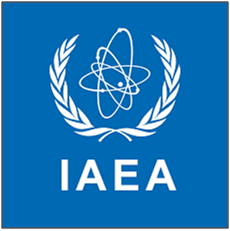
- Nature: IAEA is an intergovernmental organisation that seeks to promote the peaceful use of nuclear energy and to inhibit its use for any military purpose, including nuclear weapons.
- Establishment: It was established in 1957 as the world’s “Atoms for Peace” organisation within the UN, and governed by its own founding treaty, viz. the Statute of the IAEA.
- Main functions: The IAEA works to ensure that nuclear technology is used solely for peaceful purposes. It applies comprehensive nuclear safeguards, including: Monitoring, On-site inspections, Information analysis, and Other techniques to verify peaceful use.
- Relations with UN: It reports to both the UNGA and the UNSC and is headquartered at the UN Office at Vienna, Austria
- Distinction: In 2005, it was awarded the Nobel Peace Prize for its work for a safe and peaceful world.
- Membership: The IAEA has 180 member states, India being one of the founding members of it.
- Institutional structure: The General Conference, composed of all member states, meets annually to approve budgets and set general policy directions.
- Headquarters: Its headquarters is located in Vienna, Austria.
Source:
Category: Defence and Security
Context:
- The Indian Navy is set to commission INS Androth, the second Anti-Submarine Warfare Shallow Water Craft (ASW-SWC), at the Naval Dockyard in Visakhapatnam.
About INS Androth:
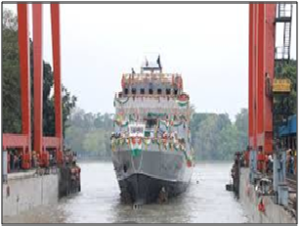
- Nomenclature: Named after Androth Island in Lakshadweep, the ship symbolises India’s commitment to securing its maritime boundaries. The name also honours the legacy of the previous INS Androth (P69), which served for over 27 years before decommissioning.
- Construction: It was built by Garden Reach Shipbuilders and Engineers (GRSE), Kolkata, features over 80% indigenous components, aligning with the government’s Aatmanirbharta (self-reliance) vision.
- Uniqueness: These ships are propelled by a diesel engine-waterjet combination and are equipped with state-of-the-art lightweight torpedoes and indigenous anti-submarine warfare rockets.
- Anti-Submarine Warfare Water Craft: It is the second of eight indigenously built Anti-Submarine Warfare Shallow Water Crafts (ASW-SWC). These vessels are designed for anti-submarine operations in coastal waters, low-intensity maritime operations (LIMO), and mine-laying missions.
- Structure: It is approximately 77 meters in length and it is the largest Indian Naval warship.
- Propulsion: The ship is propelled by a diesel engine-waterjet combination, which allows for high speed and efficient maneuverability in shallow waters.
- Armament: It is equipped with state-of-the-art lightweight torpedoes, indigenous ASW rockets, and advanced shallow water SONAR,
- Significance: It strengthens the Indian Navy’s Anti-submarine, coastal surveillance and mine laying capabilities. It enables effective submarine detection and engagement in littoral zones.
Source:
(MAINS Focus)
(GS Paper 3: Indian Economy – Employment, Inclusive Growth, and Economic Development)
Context (Introduction)
India is set to add over 133 million people to its working-age population by 2043. To harness this demographic dividend, job creation must become a national mission integrating growth, skilling, mobility, and inclusivity under a unified employment framework.
Why Employment Must Be a National Priority?
- Demographic Dividend Window: With the working population expected to peak around 2043, India has a limited window to leverage its youth advantage; failure could turn the dividend into a demographic burden.
- Equity and Inclusion: Quality jobs uplift millions from poverty, reduce inequality, and broaden consumption in a demand-driven economy, creating a self-sustaining cycle of growth.
- Need for a Unified Framework: Despite multiple schemes, the absence of an integrated National Employment Policy (NEP) weakens coordination between ministries, States, and industry.
- Demand–Supply Gap: Employment generation must address both job creation (demand side) and employability (supply side), with special emphasis on aligning education and skilling to industry needs.
- Institutional Mechanism: An Empowered Group of Secretaries and District Planning Committees could ensure coordinated governance and localised implementation.
Criticisms and Challenges
- Low Employability: Over 40% of graduates lack market-ready skills (India Skills Report 2024). Outdated curricula and poor skilling alignment hinder job readiness.
- Regional and Gender Disparities: Labour participation in northern States and female workforce participation (around 25%) remain low due to societal and infrastructural barriers.
- Labour Market Rigidities: Slow rollout of the four Labour Codes (2019–20) has created uncertainty among employers and workers alike.
- Informality: Over 80% of India’s workforce remains informal, lacking social security, data visibility, and access to credit.
- Weak Employment Data: Current surveys (PLFS, EPFO) fail to capture the gig and rural informal sectors, leading to policy blind spots.
Reforms and Way Forward
- Integrated National Employment Policy: Consolidate all employment-linked initiatives; align trade, industrial, education, and labour policies for coherent job creation.
- Sectoral Focus: Promote labour-intensive sectors—textiles, tourism, real estate, agro-processing, and health care—through targeted fiscal incentives and public-private partnerships.
- Support to MSMEs: Strengthen access to finance, technology, and markets; as the sector employs 25 crore workers, its growth is critical for inclusive employment.
- Urban Employment Guarantee: Pilot urban employment programmes in select cities to address job distress and provide a safety net akin to MGNREGA.
- Gig and Platform Economy: Develop a National Gig Policy to formalise and protect the growing gig workforce (projected to reach 9 crore by 2030), including skilling, finance access, and social security coverage.
- Gender and Inclusion Measures: Incentivise women’s participation through childcare facilities, formalisation of Anganwadi and ASHA roles, and ELI-linked benefits.
- Data and Monitoring: Establish a real-time Employment Data Task Force to capture informal sector dynamics and reduce data lag.
- Migration and Mobility: Promote a “One India for Employment” framework to facilitate inter-State mobility with social protection portability.
- Institutional Coordination: Regular review by NITI Aayog and CII to monitor implementation of employment-linked reforms and integration with Viksit Bharat 2047 goals.
Conclusion
India’s demographic dividend is a fleeting opportunity. By making employment generation the fulcrum of economic policy—anchored in inclusivity, innovation, and institutional synergy—India can achieve not just growth, but equitable and resilient national development.
UPSC Mains Practice Question
- “India’s demographic dividend can either become its greatest strength or its biggest liability.” In this context, discuss the need for a unified National Employment Policy and suggest measures for inclusive job creation.(250 words, 15 marks)
(GS Paper 3: Disaster Management – Disaster and Disaster Management)
Context (Introduction)
With increasing frequency of heatwaves, floods, and extreme weather events, India’s disaster resilience strategy now prioritises prevention, mitigation, and preparedness alongside relief and reconstruction, guided by the Prime Minister’s Ten-Point Agenda on Disaster Risk Reduction (2016) and Finance Commission reforms.
Strengthening Disaster Risk Reduction (DRR)
- Shift from Relief to Resilience: The 15th Finance Commission (2021–26) allocated ₹2.28 lakh crore ($30 billion), broadening focus from post-disaster relief to mitigation, preparedness, and capacity building.
- Balanced Fund Allocation: 30% funds earmarked for preparedness (10%) and mitigation (20%), with 70% for response (40%) and reconstruction (30%), marking a structural transformation in disaster financing.
- Nature-based and Scientific Approach: Emphasis on eco-restoration, slope stabilisation, and revitalisation of water bodies as long-term climate adaptation measures. Programmes target urban floods, forest fires, landslides, and glacial lake outbursts.
- Institutional Coordination: Inter-ministerial and Centre-State appraisal committees streamline project evaluation and ensure localised interventions through district-level planning.
- Successful Models: The National Cyclone Mitigation Programme (2011–22) worth ₹5,000 crore reduced coastal vulnerability through early warning systems, shelters, and embankments.
Criticisms and Challenges
- Fragmented Implementation: Despite improved financing, delays in project approval and inter-departmental coordination persist.
- Underutilised Funds: Many States have low absorption capacities and weak monitoring mechanisms for DRR funds.
- Urban Vulnerabilities: Rapid urbanisation without resilient planning has led to recurring urban floods and heat stress.
- Limited Local Integration: Disaster management remains top-down; panchayat-level ownership and community integration need strengthening.
- Need for Updated Data: Real-time hazard mapping, particularly in Himalayan and coastal zones, remains incomplete despite technological advances.
Reforms and New initiatives
- Institutional Strengthening: Establishment of Appraisal Committees for region-specific projects; geo-spatial training labs and faculty-led research at NIDM for field-based capacity building.
- Volunteer Force Expansion: Launch of Apda Mitra and Yuva Apda Mitra, training 2.5 lakh community volunteers for pre-disaster preparedness.
- Modernising Fire Safety: ₹5,000 crore allocated for upgrading fire infrastructure under the preparedness window.
- Mitigation Projects: ₹10,000 crore worth of projects approved in 2024–25 focusing on landslide prevention, water body rejuvenation, and forest fire management.
- Education and Awareness: A 36-stream standardised course in disaster management introduced at NIDM; mock drills and school safety programmes build public awareness.
- Technology Integration: Use of remote sensing, automated weather stations, and Common Alerting Protocols (CAP) in regional languages for timely disaster alerts.
- Global Leadership: India spearheads the Coalition for Disaster Resilient Infrastructure (CDRI) and advances DRR cooperation under G20, SCO, BIMSTEC, and IORA frameworks.
- Nature-based Solutions: Focus on bio-engineering, slope stabilisation, and eco-restoration integrates environmental sustainability with disaster mitigation.
Conclusion
India’s evolving disaster management model exemplifies a transition from reactive relief to proactive resilience. By embedding science, finance, and community participation into governance, India is positioning itself as a global leader in disaster risk reduction.
Mains Question
India’s disaster management paradigm has shifted from post-disaster relief to risk reduction and resilience. Examine the role of the 15th Finance Commission and nature-based solutions in strengthening India’s disaster preparedness.(250 words, 15 marks)



